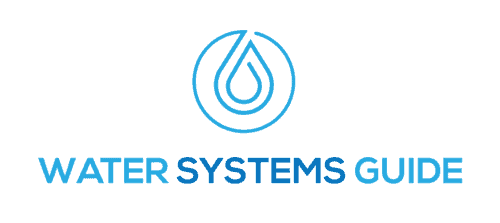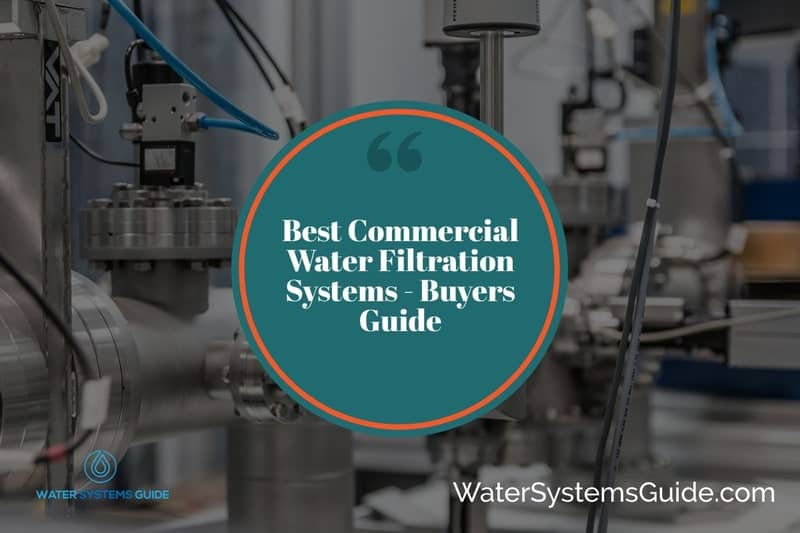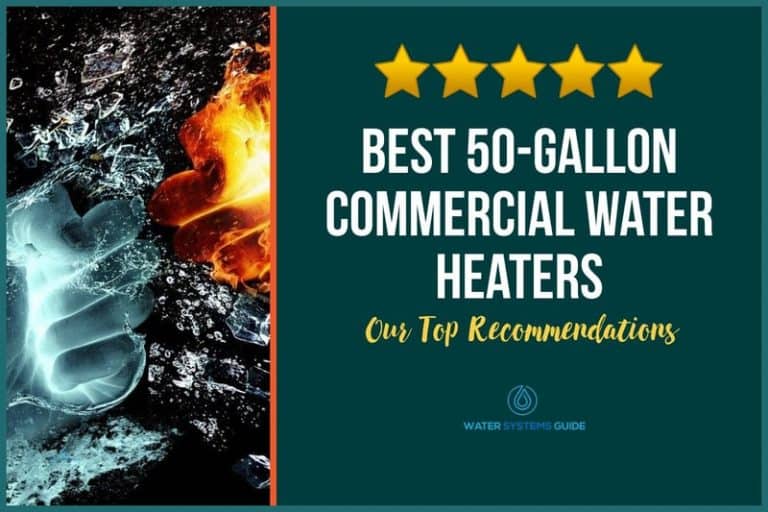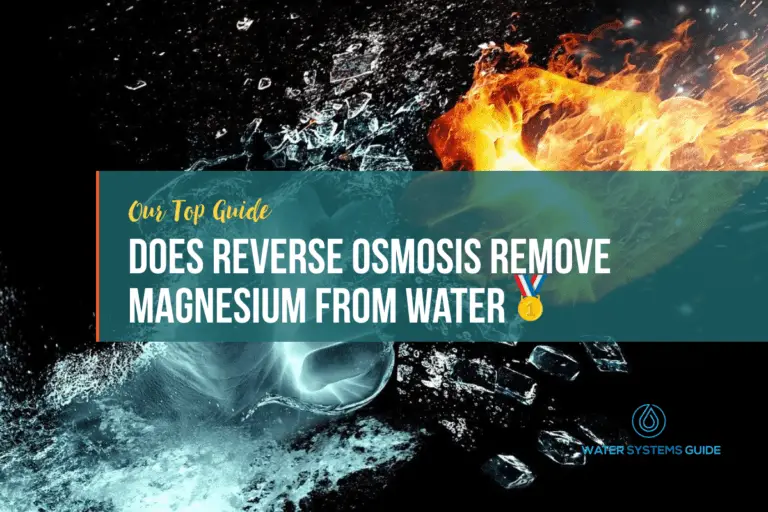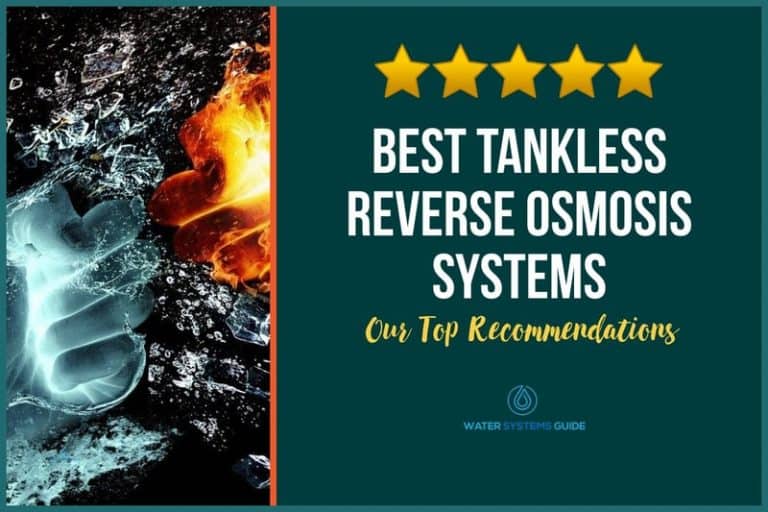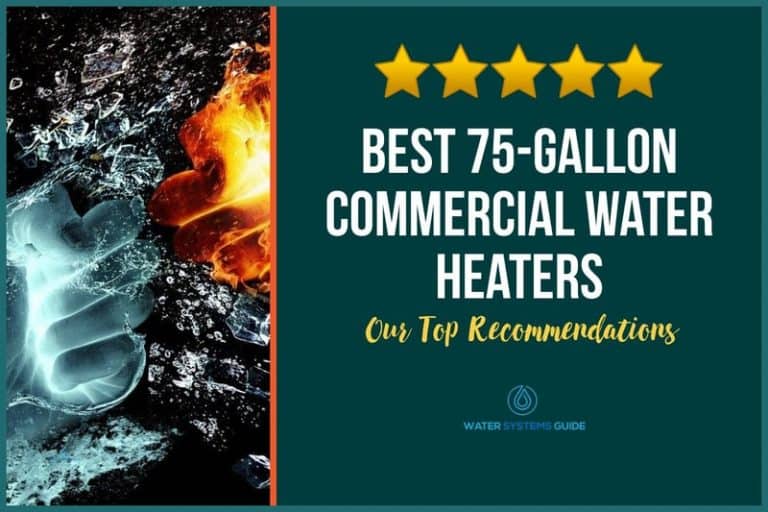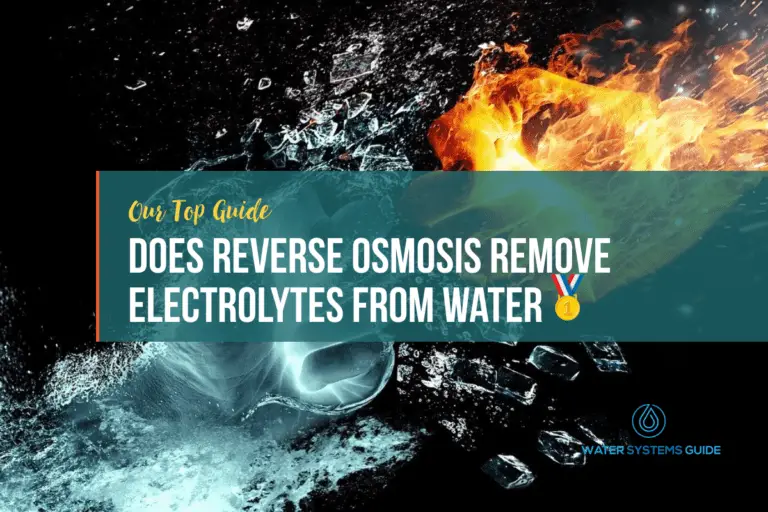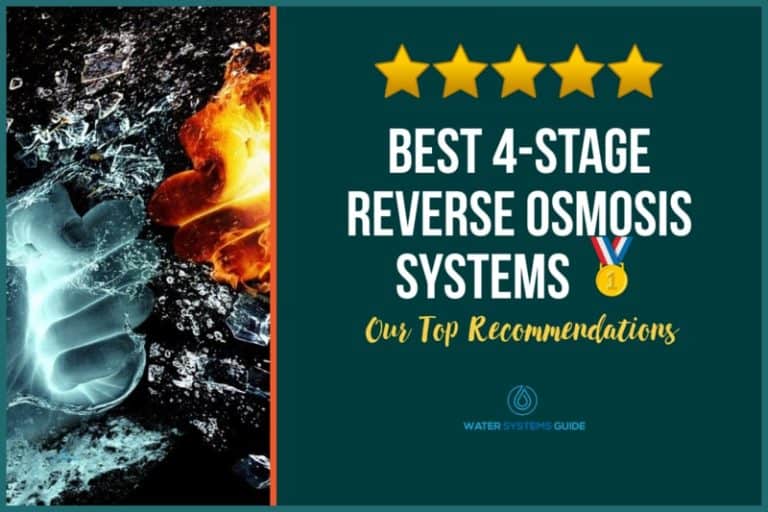Top 8 Best Commercial Water Filtration Systems🥇(November 2025)
Last Updated: 20 November 2025
In this article, we’re going to be talking about the best commercial water filter systems that are available on the market.
Are you worried about the quality of water you drink at your workplace? Experts give you plenty of reasons to be concerned.
You may already have a whole house water filtration system for your home, but what about at work?
Between 1982 and 2015, millions of Americans got their drinking water from a source that was in violation of the Safe Drinking Act.
The danger still lurks. Researchers at the nonprofit Environmental Working Group and Northeastern University found out last year that at least 43 US states have sites where toxic fluorinated compounds known as PFAs contaminate drinking water.
That they make your tap water safe to drink isn’t the only reason why you might want to invest in the best commercial water filtration systems.
These water filters also improve the taste of your water, eliminate up to 99% of all contaminants, neutralize any odors, and improve its quality.
Best Commercial Water Filtration Systems Review – Top 8
Apex 5-Stage RO-90 Water Filter
The Apex 5-stage water filter is designed to remove all the common and rare impurities that may find their way into your drinking water. It has been tested and certified to modern standards and guarantees one of the highest contaminant removal rates.
Technical Specs
– Gallons per day (GPD): 90
– Gallons per minute: 0.0625
– Water pressure: 85 psi
General Specs
– Price: $$
– Dimensions: 16 x 5.2 x 17.5 inches
– Weight: 25 pounds
Features
One of the unique selling points of this model is its 5-stage treatment process. The first stage comprises of a high-capacity polypropylene sediment filter. Its operating mechanism allows it to remove dust, particles, and rust. That’s why it not only improves water quality but also enhances the life of the overall system.
Both the 2nd as well as the 3rd stage filters are made of premium extruded carbon block. They use activated carbon filtering to remove chlorine, taste, odor, color, and cloudiness from your drinking water. The VOCs and other common chemicals are also removed from water in this stage.
As for the fourth stage reverse osmosis (RO) membrane filter, you can count on it to remove up to 99% of total dissolved solids from your water supply. The pressure applied in this stage is high enough to rid your water of contaminants like arsenic, lead, viruses, and bacteria.
To remove any contaminants that may have hoodwinked the previous four stages, the fifth stage comes into play. Its advanced coconut shell refining carbon allows it to remove any residual taste from the water which it may have adopted during its stay in the filter.
What we don’t like
Provided you already have low water pressure, the fact that this model doesn’t come with a booster pump of its own means you may have to invest in an additional permeate pump.
Pros
• WQA-certified filter
• Five-stage filtration
• 2-year manufacturer warranty
Cons
• Doesn’t come with booster pump
iSpring RCB3P 300 GPD RO Water Filter System
Posing yourself as an alternative to best-selling water filtration systems is one thing. Justifying that claim is an altogether different ball game. That’s precisely what the iSpring RCB3P water treatment system does. Though you’d have to pay over the odds to take advantage of what it has to offer.
Technical Specs
– Gallons per day (GPD): 300
– Gallons per minute: 0.208 gallons
– Water pressure: 85 psi
General Specs
– Price: $$$
– Dimensions: 14 x 10 x 30 inches
– Weight: 52 pounds
Features
Similar to most commercial water treatment systems on the market, the iSpring 3CBRP doesn’t rely on a single stage to remove all contaminants from your drinking water. It boasts five stages that receive municipal water, remove impurities from it, and deliver it to your tap.
The first of those five stages comprises a standard sediment filter. It boasts multi-layer filtration of its own to ensure fewer clogs and minimize pressure loss. The particle-less water leaving this stage then enters the activated ANSI-certified carbon filter where it bids farewell to rust, odor, and chlorine.
Provided the water still has any taste and odors, it shuns both of them in the subsequent carbon block filter. This stage then sends the water to a food-grade reverse osmosis membrane, which rejects a broad spectrum of impurities down to 0.0001 microns.
Unlike the first four stages, which are concerned with removing impurities, the final stage is dedicated to improving the taste of your drinking water. It then sends the water to a booster pump which raises the water pressure to make sure it exceeds your daily usage requirements.
What we don’t like
Most commercial water filtration systems you see on the market don’t come with a tank. However, most don’t cost as much as the iSpring RCB3P water filter as well. That’s why it wasn’t pleasing for us to note that this model doesn’t provide a water storage tank in its package.
Pros
• Huge flow rate
• Comes with a booster pump
• Filters particles down to 0.0001 micron
Cons
• Water storage tank not included
WECO MX-350 Commercial RO Water Purifier
![]()
The fact that this water filtration system isn’t as famous as some of the other industrial water purification systems in this review comes across as a double-edged sword. On the one end, it means you won’t hear many people recommending it. On the other, its anonymity has forced this filter’s manufacturer to keep its asking price low.
Technical Specs
– Gallons per day (GPD): 350
– Gallons per minute: 0.243 gallons
– Water pressure: 70 psi
General Specs
– Price: $$
– Dimensions: 18 x 10 x 22 inches
– Weight: 43 pounds
Features
Does its meager asking price mean that this filter doesn’t come loaded with high-end features? First, the price isn’t that meager. Second, nobody who hasn’t looked at its price tag would be able to correctly guess it by looking at what this model has to offer.
Need proof to believe in this claim? Its ease of installation is one. This model comes pre-assembled to make sure that anyone who has ever held a screwdriver in hand can get it up and running with standard household tools in a matter of powers. You don’t need to be a plumber to install it.
The water entering this filter first passes through a sediment filter which helps it get rid of tiny particles like rust, dirt, and insects. It is then treated in three parallel stages – activated carbon filter, reverse osmosis membrane, and post-water treatment– before you can receive it in your tap.
More importantly, in contrast to some other models in this review, this filter comes with a built-in water storage tank. It is capable of filtering 350 gallons of water per day at a moderate pressure of 90 psi. You can also count on this model to keep working at its best at a temperature of up to 77*F.
What we don’t like
One area where this model has cut corners to keep its asking price low is the list of attachments that comes in its package. The absence of a booster pump, in particular, might be keenly felt by users whose water usage requirements are on the higher side.
Pros
• Produces 350 gallons per day
• Removes 98% of water contaminants
Cons
• No booster pump
Light Commercial Reverse Osmosis Water Filtration System
The Light Commercial Reverse Osmosis Water Filtration System has the construction and filtration capacity that make it ideal for use in restaurants, bars, labs, cafes, salons, restaurants, pharmaceutical industries and offices. That’s because it comes with an oversized gallon which is capable of filtering excessive amounts of water.
Technical Specs
– Gallons per day (GPD): 400
– Gallons per minute: 0.277gallons
– Water pressure: 22 – 95 psi
General Specs
– Price: $$$
– Dimensions: 18 x 12 x 36 inches
– Weight: 38 pounds
Features
Three specific features make this water filtration system ideal for commercial usage. It comes with a booster pump that allows you to adjust the pressure of water leaving this commercial well water filtration system between 22 and 95 psi – thereby making this model useful for a wide array of commercial premises.
Secondly, it features 20’’ pre RO filters whose extra-large size enables this product to deliver as much as 30,000 gallons of water. Thirdly, since the size of the filters is twice as much as that of industry-standard 10’’ filters, you won’t have to replace them anytime soon.
Its five-stage process means you won’t have to worry about the quality of your drinking water. The water coming from outside first passes through a sediment cartridge, which then nudges it towards an activated carbon filter. Both of them remove dust, corrosion, taste, and chlorine from water.
The two subsequent levels– a low-pressure membrane that is capable of processing up to 400 gallons of water per day and a post-stage carbon filter – are followed by a booster pump which raises the water pressure to a level at which it would be able to meet your requirements.
What we don’t like
Interestingly, the only thing that we didn’t like about this product had nothing to do with its functioning. It was the fact that we didn’t receive any instructions on how to install this filter that confused us. Aside from that, we have no complaints about this product.
Pros
• Huge capacity
• Compatible with most storage tanks
• Includes a booster pump in its package
Cons
• Problem with installation instructions
iSpring RCS5T Reverse Osmosis Water Filter System
Although this model is anything but inexpensive, it justifies its premium asking price by offering a plethora of high-end features. Among them are its above-average capacity, a user-friendly installation mechanism, and an easy-to-read pressure gauge. So you won’t have anything to complain about.
Technical Specs
– Gallons per day (GPD): 500
– Gallons per minute: 0.347gallons
– Water pressure: 25 psi
General Specs
– Price: $$
– Dimensions: 14 x 11 x 17.5 inches
– Weight: 32.7 pounds
Features
One of the unique selling points of this model is its user-friendly tankless design. It requires no water storage and processes water as it enters your premises. That arrangement means you won’t have to spend extra on a water storage tank, pipes, and tubing.
Any water entering this filtration system first passes through a sediment filter where rust, dirt, and sand particles are removed. Both the 2nd and 3rd levels have an activated carbon filter media to rid the water of any residual chlorine, taste, smells, and disinfection byproducts.
The fourth stage, meanwhile, utilizes the process of reverse osmosis to remove metals and other harmful substances from water. Any chlorine, taste, or odor that may still exist in water are taken care of in the fifth and final post carbon filtration stage.
This model can withstand the pressure of up to 25psi and includes a built-in pressure gauge to give accurate and timely pressure readings. It is capable of filtering up to 500 gallons per day and comes with a 360-degree free-swivel chrome drinking water faucet.
What we don’t like
While it is true that this system has a tankless design, you may have to purchase and install a tank on your own if you want to take advantage of its maximum 500GPD filtration capacity. Otherwise, if you insist on using it as it’s delivering in the package, its capacity might be less.
Pros
• Boosts 1:1 drain ratio
• Contains an efficient booster pump
• Includes a chrome drinking water faucet
Cons
• Plastic housing
WECO HydroSense Reverse Osmosis Water Filter
Most water filtration systems you see on the market aren’t easy to install. Those who do charge a king’s ransom for their services. The WECO RO water filter belongs to the second category. This model provides everything you may look for in commercial water purifier systems but is uber-expensive.
Technical Specs
– Gallons per day (GPD): 500
– Gallons per minute: 0.347gallons
– Water pressure: > 55 psi
General Specs
– Price: $$$$
– Dimensions: 14 x 11 x 17.5 inches
– Weight: 32.7 pounds
Features
In case you were wondering, this model comes loaded with features that help it justify its astronomical asking price. It is equipped with automatic electric booster pumps whose pressure sensors make sure that you always operate this unit in optimal condition.
Its water treatment process kicks-off by removing tiny particles like insect parts, silt, and rust from your drinking water. Two parallel activated carbon block filters then pass the water through their 5-micron and 0.5-micron membranes to remove taste and odor-causing compounds.
The next step involves reverse osmosis. Here, the water is squeezed and boosted through a special membrane. The sieve traps heavy metals like lead and chromium. In contrast, the purified water is allowed to make its way through your drinking water faucet.
Since most components of this system come pre-assembled, you can install it in a matter of hours and with simple hand tools. All you have to do to get it up and running is connect this unit with the supplied atmospheric tanks, flat converter, and your water pipes.
What we don’t like
Is there something that we didn’t like about this product? Apart from its above-average price tag which means that the majority of users can’t afford this filtration system, its huge weight (70 pounds) means you won’t be able to install it on your own. You might need to hire a helping hand for its installation.
Pros
• Automatic electric booster
• Built-in pressure sensors
• Removes TDs, fluoride, lead, sodium, and mercury
Cons
• Astronomically expensive
Oceanic Commercial Grade (RO/DI) Water Filtration System
In contrast to the majority of water filters that you see on the market, the Oceanic commercial-grade filter doesn’t solely rely on reverse osmosis to deliver safe and healthy water to your household. Instead, this model boasts a deionization filter to improve the quality of your drinking water further.
Technical Specs
– Gallons per day (GPD): 800
– Gallons per minute: 0.555gallons
– Water pressure: N/A
General Specs
– Price: $$$$
– Dimensions: N/A
– Weight: 35 pounds
Features
Since this water filtration system combines reverse osmosis (RO) with deionization (DI), you can expect to garner three benefits. First, the process of reverse osmosis will be enough to remove up to 95% of dissolved ions and 99% of all contaminants from water.
Second, the remaining percentage of salts and contaminants will be removed by the deionizer. It significantly reduces the substances that won’t only harm your health if ingested, but would also cause scaling inside the filter and in the tubes carrying the water to your faucet.
Third, apart from removing contaminants, the deionizer also adds positively charged ions (cations) and negatively charged ions (anions) to water. Both these ions combine to form water, which is neither too acidic nor too basic. That’s the type of water experts tell us leads to good health.
Lastly, this unit comes with a built-in booster pump. It raises the production of purified water to make sure that it meets all your water usage requirements. Hence the reason why this model is suitable for shopping centers, laboratories, aquariums, and other light commercial applications.
What we don’t like
To be fair, Oceanic has stated in this product’s description that its flow rate will decrease in winter conditions. Low temperatures seem to have an adverse effect on water’s viscosity, thereby reducing its ability to move as freely through the filter and the pipes as it does in summer conditions.
Pros
• Leaves 0 TDS behind
• Delivers ultra-pure drinking water
• Considerable water production rate
Cons
• Lower water flow rate in winter
Express Water Commercial RO Water Filtration System
Did you come here in search of a filtration system with an astronomical flow rate? If your answer to this question is in the affirmative, then your search ends with the Express Water commercial RO water filtration system. Scroll down to know why that’s the case.
Technical Specs
– Gallons per day (GPD): 2000
– Gallons per minute: 1.388gallons
– Water pressure: 35-300 psi
General Specs
– Price: $$$$$
– Dimensions: 56” x 17 5/8” x 16 1/2”
– Weight: 160 pounds
Features
The Express Water filtration system does everything you’d expect from a model capable of purifying 2,000 gallons of water per day. It boasts a full-body stainless steel construction which is rustproof and is sturdy enough to withstand any impact as well as last for years.
To protect its filters as well as your health, this model is equipped with a sediment filter on its entry point. It is made of food-grade polypropylene microfiber and features four distinct layers of membranes that capture and remove particles down to the size of 5 microns.
The outer layer of the sediment filter removes coarse contaminants, whereas the inner layer is tasked with eliminating finer particles. Any contaminant that could pass through the first stage meets the carbon block filter which is located at the 2nd stage.
By capturing chlorine, carbon, pesticides, and chemicals, the AC filtration stage improves the taste and drinkability of water. It is packaged with tightly-packed carbon membranes, which ensure that the last filtration stage – operating on the principle of reverse osmosis – can quickly filter water.
What we don’t like
Add up the cost of all the seven filters that preceded this model, and it would still be less than the asking price of the Express Industrial Water Filtration System. That’s the ‘only’ concern we have about this model.
Pros
• High volume filtration
• Made with FDA approved food-grade material
• 2000 gallons per day capacity
Cons
• Very expensive
Frequently Asked Questions
Here are some of the FAQs related to commercial water filter systems:
✅What is a commercial water filtration system?
An Industrial filtration system removes up to 99% of all impurities that cause hardness in water and make it unsafe to drink. They have multi-stage water filters to remove all kinds of impurities, including sediments, chlorine, arsenic, sodium, VOCs, and lead. Most of them have built-in booster pumps to increase the production of water.
💧What types of water filters are available commercially?
Here are the various categories of commercial water filters
Ion Exchange Systems
Also known as salt-based water softeners, these water softeners treat hard water by replacing the calcium and magnesium present in water with their built-in salt, hydrogen, or potassium substances. The reason why most ion-exchange systems use salt is that it’s the most inexpensive water softener.
Ion-exchange systems contain two tanks: a resin tank and a brine tank. The water first passes over man-made layers of resin beads where the hardness causing ions present in water (calcium, magnesium, and sodium) are replaced. The brine tank than regenerates the resin for the next softening cycle.
Pros
– Inexpensive option
– Effective produces soft water
– Commonly available Cons
– Possible downtime if you use a single-tank system
Reverse Osmosis
Osmosis is a process in which the water passes through a semi-permeable membrane from a less concentrated saline solution towards a more concentrated one. Reverse osmosis, on the contrary, sees water move in the opposite direction under hydrostatic pressure (applied by a pump).
While the majority of water passes through the membrane, that isn’t the case for dissolved salts, bacteria, and other harmful substances. The water that comes out of reverse osmosis usually has 95% to 99% less total dissolved solids (TDS) than the one that entered into the process in the first place.
Pros
– Low cost
– Improves water quality, taste, and odor
– Filters down to the lowest micron
Cons
– Waste more water
Activated carbon
Activated carbon filtration is a process in which water is passed over a bed of activated carbon to remove impurities and contaminants. The underlying bed contains innumerable activated carbon particles that absorb the pollutant particles in the water on their surface.
These water filters are recommended if your water has taste, odor, chlorine, sediments, and volatile organic compounds (VOCs). They remove particles in the range of 0.5 to 50 microns but aren’t effective at removing salts, minerals, and dissolved organic compounds.
Pros
– Remove chlorine, VOCs
– Filter down to 0.5 microns
– Cost less and are easy to maintain
Cons
– Not good at removing salts, minerals and dissolved organic compounds
Ultraviolet filters
Mostly used alongside activated carbon filters, UV industrial water treatment systems work best against viruses and bacteria. They use the electromagnetic energy of light to attack the harmful substances at their core by altering their DNA and removing their tendency to reproduce.
Other benefits of the UV commercial water purification systems include their meager energy requirements and low maintenance costs. The bulbs that emit UV light inside these systems require to be replaced only once per year.
Pros
– Destroy viruses and bacteria
– Consume low energy
– Have meager maintenance costs
Cons
– Won’t eliminate other contaminants such as chlorine, VOCs or lead
🚰What are the benefits of an industrial water filter?
Following are the advantages of commercial water filtration systems:
Extended equipment life
Do you have equipment like a boiler, cooling tower, and pumps in your industry? Then you might already know the importance of clean water for their health.
Water with sediments, minerals, and other harmful substances can easily cause scaling and corrosion in equipment, reducing their efficiency and shelf life.
Reduced maintenance costs
When parts become contaminated with dirty water, their efficiency drops. That leads to the equipment operating slowly and churning out inferior quality industrial water filters.
You have no choice but to spend money on maintenance – and repairing – to overcome these issues. Having a industrial water treatment system will save you from all these costs.
Greater treatment efficiency
When used in the pre-treatment phase, industrial water treatment systems ensure and even enhance the efficiency of the equipment that requires water to keep working.
Conversely, if you’re going to install them at the post-treatment phase, these systems will make sure that the water exiting your premises is safe for the environment.
Safe and healthy water
One of the most important benefits of these systems is that they make drinking water safe and healthy. That they do by not only removing contaminants from water but also adding minerals to make it healthy for consumption.
💧What features to look for when selecting an industrial water filter system?
The following features deserve your attention when choosing industrial water treatment systems:
– Types of contaminants
Let’s assume that your tap water contains chlorine, but you end up purchasing a water treatment system which only removes viruses. Would the choice be of any good? Of course not.
You should know the type of contaminants present in your tap water – by having the water tested in a proper lab – before selecting a filter that could remove the same.
– Water Flow Rate
Measured in gallons per day (GPD), its water flow rate tells you whether the filter would supply enough water to meet your water consumption requirements.
As a rule of thumb, your filter’s GPD should be double to that of your requirements. It would ensure that even with the build-up of impurities, the filter would keep on filtering enough water to meet your needs.
– Micron rating
A filter’s micron rating indicates how many contaminants it would remove by the size of the contaminants. The lower the filter’s micron rating, the smaller the size of particles it will keep out.
However, as you might already know, filters that have extremely low micron ratings (0.05 or less) tend to be extremely expensive.
– Filter lifespan
Most models recommended in this review require you to replace their filters once every two years or so. Some go as far as going three years without requiring you to replace their cartridge.
But you can use all those filters for longer than what their lifespan indicates if your daily water consumption is less – as that would mean that the filter has to remove fewer contaminants.
– Water Recovery Rate
Most manufacturers hate to admit it, but it’s a fact that almost all RO systems you see on the market wastewater. In the past, even the best among them waste about 3 gallons of water per gallon filtered.
Fortunately, the situation has now improved. Filters nowadays come with a recycle valve that lets them reuse the drain water for backwashing. Such models have an up to 75% water recovery rate.
– Certifications
Awarded by the American National Standards Institute (ANSI) and Water Quality Association (WQA), the WQA Gold Seal is an indicator that the system bearing it is trustworthy.
Filtration systems that get this seal do so after undergoing a rigorous testing procedure. The process checks not only the safety of the material of the filter but also the quality of water that it churns and the structural integrity of the whole system.
💧How do you purify water for commercial use?
Commercial water filters purify water by passing it through the following stages:
Stage 1: Sediments Pre-filter
There are two reasons why most systems install a sediment filter on the first step. The sediment filters remove dirt, dust, and other particles which are commonly found in municipal or well water.
The removal of these particles, in turn, save the filters installed in the upcoming levels from rust, corrosion and scaling issues. Also, water with no sediments doesn’t clog pipes and suffer minimal pressure loss.
Stage 2: Activated carbon filtration
Is your water tasting funny or giving off an unpleasant smell? That is because it contains excessive amounts of fluoride and spent chlorine. Both these compounds are removed by an activated carbon filter.
As stated earlier, an AC filter contains a bed of activated carbon that traps the impurities present in water on its surface through a process known as adsorption – thereby helping the water get rid of smell and unpleasant odor.
Stage 3: Reverse osmosis membrane
Made of food-grade and high-capacity material, a reverse osmosis membrane allows water and virtually nothing else to pass through it. It is, therefore, responsible for eliminating a broad spectrum of impurities from water.
Almost all reverse osmosis systems remove common chemical contaminants, including sodium, copper, chloride, and lead. Aside from that, they reduce arsenic, fluoride, nitrate, calcium, magnesium, radium, nitrate, and phosphorous.
Stage 4: UV filtration (optional)
Some of the ultra-expensive filtration systems attach a UV filter at the end to remove viruses, bacteria, and pathogens from water.
🚰How long do water filtration systems last?
Provided you replace their cartridges regularly, industrial water filtration systems can last for years with proper maintenance.
Conclusion
Apart from recommending the eight best commercial water filtration systems currently available on the market, we have also provided you with a detailed buying guide. That means you now have enough information to select the best model for your needs.





